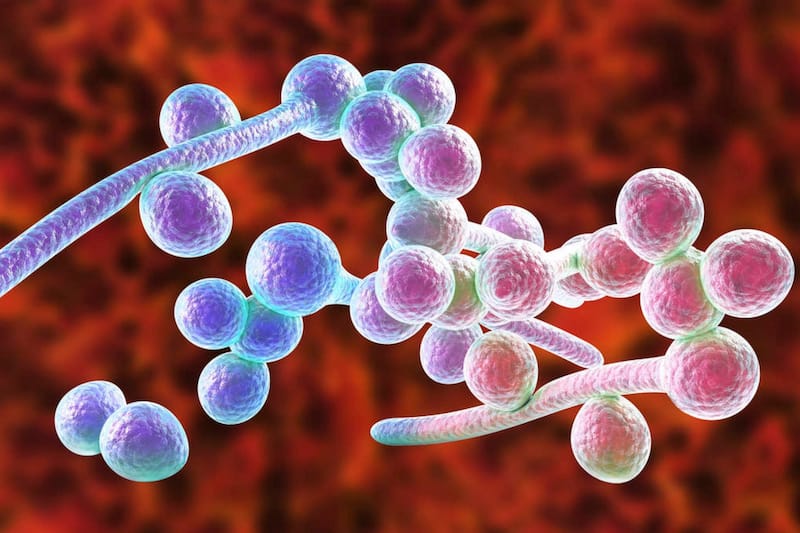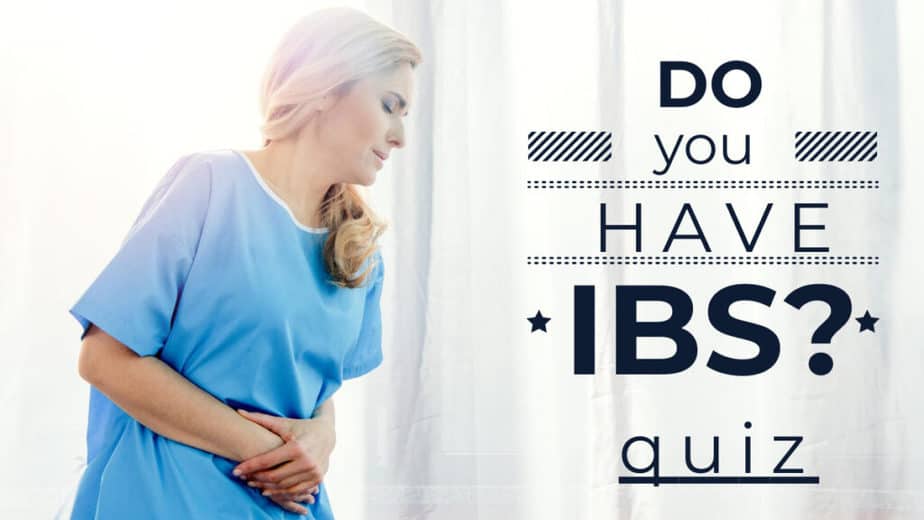IBS and Candida have often been linked together because many assume there’s a direction relationship between the two. Candida is thought to trigger IBS symptoms, but does it?
Irritable bowel syndrome (IBS) is a common digestive disorder that affects millions of Americans. IBS is characterized by chronic abdominal pain or discomfort, bloating, gas, diarrhea, constipation, and/or changes in bowel habits.
The exact cause of IBS remains unknown, but researchers believe that it has a connection to the gut microbiome. Certain foods, medications, and other conditions may trigger symptoms and are often said to be common causes of IBS.
Candida albicans is a fungus that lives naturally in the human body. Some people develop candidiasis when their immune system becomes weakened due to illness or stress.
This fungal infection does not cause inflammation in the intestines. There’s little proof that shows Candida is a direct cause of IBS symptoms.
This article will cover what Candida is and where people see the potential relationship between IBS and Candida.
- Related article: What is IBS (Irritable Bowel Syndrome)?
What is Candida?
Candida is a yeast or fungus that lives naturally on the skin and throughout the body. It is commonly found in the mouth, vagina and on the skin surface.
In various circumstances like hot, moist environments or in the setting of immunosuppression from things like antibiotics or chemotherapy, there can be an overgrowth of yeast.
This yeast overgrowth can lead to infections like thrush (oral yeast), esophageal candidiasis, vaginal yeast infections, or yeast infections of the skin (often under breasts and in the groin).

Candida Causes
Diabetes is a common cause of yeast infections. When there is an increased amount of glucose within the bloodstream, it gives the yeast more fuel to grow.
Medical conditions that result in a suppressed immune system, like HIV and cancer, can make people prone to yeast infections. Other causes include medications like antibiotics, immunosuppressive drugs, corticosteroids, and chemotherapy.
Pregnant women and those on hormonal birth control pills can also be more likely to get vaginal yeast infections.
People at risk for invasive candidiasis (where the yeast can get into the bloodstream) include critically ill people in the ICU, post operative patients, transplant recipients, patients on hemodialysis or requiring a central line (long IV catheter which has the tip near the heart), and patients receiving nutrition through an IV. IV drug use is also a risk factor.
Dentures and smoking can increase the risk of developing oral thrush.
Learn more about Female IBS Symptoms and IBS Symptoms Male.
Candida Symptoms
When people become symptomatic from Candida and a yeast overgrowth, it often depends on the location of the infection as to what the symptoms are. Symptoms can show up in these locations:
- Mouth
- Esophagus
- Vagina
- Skin
- Bloodstream and internal organs
Oral thrush can cause burning and pain in the mouth, as well as white or yellow plaques on the tongue, roof of the mouth and gums. It can cause a loss of taste or pain with chewing and swallowing.
Yeast in the esophagus can result in pain or difficulty swallowing and heartburn symptoms.
A vaginal yeast infection typically causes itching, burning, white discharge or redness of the skin around the vaginal opening. This can also result in painful urination or intercourse.
Fungal skin infections typically cause a red, scaly rash that can be itchy.
Invasive fungal infections, in which yeast gets into the bloodstream results in a patient becoming very ill, often requiring ICU level support to help with low blood pressure. They can also develop fevers and chills and risk getting a fungal infection in internal organs like the brain, bones, joints or heart.
Candida Diagnosis
To diagnose a yeast infection, tissue samples or swabs can be taken from the affected area (like a throat swab, biopsy of the esophagus, or skin or vaginal swab).
These specimens can be looked at under a microscope for evidence of Candida. Fungal cultures can also be obtained from these specimens, in which the sample is put in a culture medium to allow yeast to grow. These colonies of yeast become visible after days to weeks.
If there is concern for an invasive fungal infection, blood samples are obtained and cultured.
Candida Treatment
The course of treatment for a yeast overgrowth infection is dependent on the location of the infection.
If yeast involves the mouth only, nystatin can be used to swish, and swallow or spit out. If this is unsuccessful at treating the overgrowth, sometimes oral antifungal medications like fluconazole are used.
In the esophagus, an antifungal pill (usually fluconazole) is used for a couple of weeks to clear the infection.
Vaginal yeast infections can be treated with vaginal suppositories of an antifungal medication or with oral fluconazole. Learn more – How Do Suppositories Work.
For bloodstream infections, intravenous antifungal medication is required, usually for about 2 weeks. If the infection travels to other organs, like bones or joints, 6 weeks of therapy may be required.
Candida Prevention
There are several ways you can prevent a yeast infection.
Prevention of yeast overgrowth involves avoiding smoking, wearing appropriately fitting dentures if needed, avoiding unnecessary medications like steroids or antibiotics (especially for a virus or common cold).
Controlling diabetes and avoiding a high sugar diet can help control levels of yeast within the body.
It’s also important to avoid high heat and moisture on your body. For vaginal yeast infections, wearing breathable cotton underwear can help.
Reduce the risk of invasive candidiasis by avoiding high risk situations like IV drug use, unnecessary nutrition through an IV, and high risk sexual encounters in which HIV could be contracted.
Make sure you are up-to-date on age-appropriate cancer screenings. That can help reduce the risk of immunosuppression from cancers or chemotherapy.
Candida and IBS Connection
Currently, there is not enough scientific evidence proving that there is a link between Candida and IBS. Research on any potential connection is still in its infancy.
Yeasts need sugar to grow and flourish, and some people feel that eliminating or reducing sugar from the diet reduces IBS symptoms like bloating, gas and diarrhea. However, this does not mean that bloating, gas and diarrhea are a result of yeast overgrowth.
Intestinal yeast are an important part of the gut microbiome, but are present in far lower quantities than the bacteria in the gut.
IBS and Candida Final Thoughts
There is no definitive answer yet regarding whether or not there is a direct relationship between IBS and Candida or yeast overgrowth in the digestive tract.
Candida might play a role in causing IBS-like symptoms, however, more research needs to be done before we can say for certain.
To learn more about IBS, check out these articles:
- How to Relieve IBS Pain
- Is IBS Curable?
- Is IBS Common?
- Can IBS Cause Motion Sickness
- IBS and Mucus in Stool
- Celebs With IBS
- IBS and Birth Control
- Loss of Appetite With IBS
IBS and Candida FAQs
Can Candida cause IBS symptoms?
Candida, a natural part of the gut flora, is unlikely to cause IBS signs and symptoms. However, research is in its infancy and new evidence in the future may prove a link. In most cases, dietary changes like cutting out sugar, processed foods, and carbohydrates may play a more important role in treating IBS symptoms more so than eliminating the yeast itself.
Can Candida be mistaken for IBS?
Candida infections are unlikely to be mistaken for IBS. In most cases, Candida infections involve the mouth, esophagus, skin, vagina or blood stream. With esophageal Candidiasis, pain or difficulty swallowing is the most prominent symptom.
Can IBS cause yeast infections?
IBS will not cause yeast infections. Yeast is naturally present throughout the body, but not in high levels. In certain circumstances, like being immunosuppressed, taking certain medications, or being diabetic, yeast can flourish and cause infection. There is no evidence that IBS suppresses your immune system enough to cause an overgrowth of yeast.
How do I get rid of Candida in my gut?
There is no need to eliminate Candida from the gut. It is a normal part of the gut flora. When patients are put on systemic antifungal medication, this will reduce the levels of Candida within the gut, but over time, the normal populations of Candida in the gut will return.
What does Candida stool look like?
Candida can be cultured from the stool in up to 65% of asymptomatic patients. Some studies show that Candida is more commonly grown in patients with a secretory type diarrhea, which is usually loose or watery, non-bloody stool. Sometimes mucus in the stool can be present.
Does Candida cause gut inflammation?
Candida does not cause gut inflammation. In patients who undergo colonoscopy, no inflammation is seen in the bowel despite Candida growth in stool culture. Candida does not cause blood in the stool. If you have symptoms of bloating, diarrhea, or abdominal pain, see your physician to discuss the symptoms in more detail and for further testing: Candida is unlikely to be the culprit.
Sources
- CDC: “Candidiasis”
- European Journal of Gastroenterology & Hepatology: “Yeast metabolic products, yeast antigens and yeasts as possible triggers for irritable bowel syndrome.”
- Mayo Clinic: “Irritable bowel syndrome”


